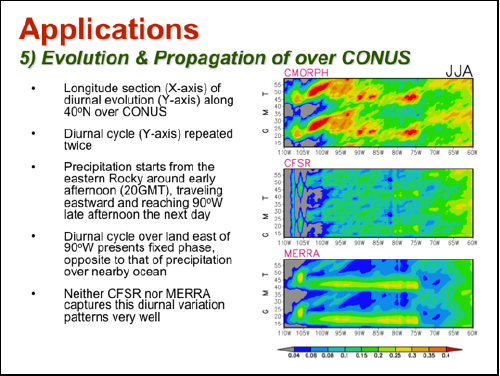HMT Collaborates with Climate Prediction Center
July 11, 2014
Dr. Pingping Xie from the NOAA Climate Prediction Center (CPC) visited HMT colleagues at the Earth System Research Laboratory on June 24-25 to discuss collaborations to improve precipitation estimation. Xie is the developer of the CPC Morphing technique (CMORPH), which uses a combination of passive microwave and geostationary infrared (IR) to produce a global precipitation estimation product. Recent advances in CMORPH include a gauge bias correction and, at least for regional applications, incorporation of radar data to further correct the CMORPH satellite estimates.
Xie and HMT colleagues discussed comparing different QPE analyses generated at CPC with similar estimates generated using the Multi Radar–Multi Sensor (MRMS) and Multi Sensor Precipitation Estimator (MPE) products to determine which methods work best in regional settings for different kinds of precipitation events: cool season extreme precipitation observed in HMT-West and warm season extreme precipitation in the HMT Southeast Pilot Study.
Contact: Rob Cifelli
